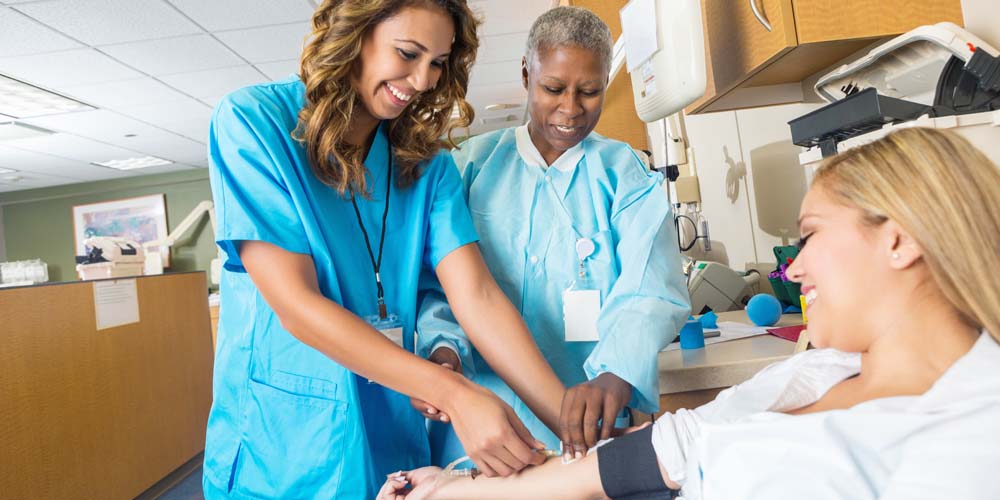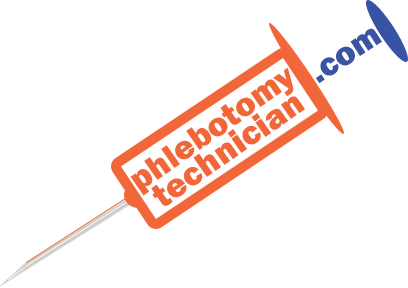Work Environment
Phlebotomists work in healthcare settings such as laboratories, hospitals, doctor’s offices, and of course, wherever blood is donated. Phlebotomy technicians stand during blood draws and may be required to hand-deliver blood to on-site labs which could result in a good deal of walking day in and out. Reasonable accommodations for people with physical disabilities available in most workplace settings.

Phlebotomy is not without risks. Firstly, if you faint at the site of blood…phlebotomy may not be for you. In fact, let’s just call it here. Don’t become a phlebotomy technician if you are squeamish. Secondly, working with the sharpest of instruments in a healthcare setting has severe health implications. You may recall the the story of “Jane Doe” (Mary Magee), a nurse, who accidentally stuck herself while changing the intravenous line of a patient in the HIV/AIDS ward of San Francisco General Hospital. She was 24 at the time and was faced with short odds of surviving past her 32nd birthday. She lived long enough to see the development of inhibitor drugs and she is alive today some 35 years later. But, we don’t know what we don’t know. The next scary bloodborne illness is inevitable. Thirdly, slip-and-fall accidents remain high for all healthcare workers…watch your step!
These are, of course, not all the risks. But, you’ll learn all about them in training.
